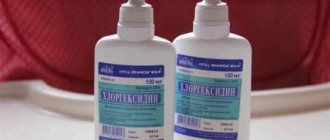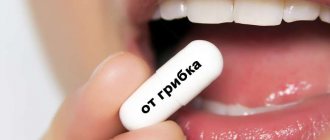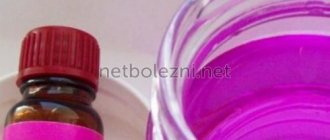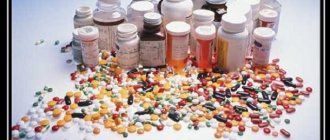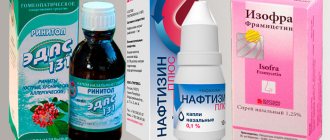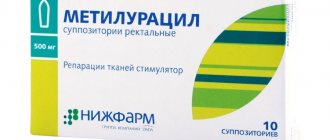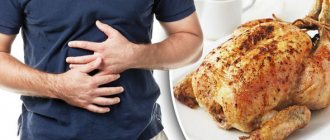Many disorders of the digestive tract occur due to secretory insufficiency of the pancreas. A lack of enzymes leads to slower digestion of food and poor absorption of nutrients. The result is flatulence, bloating, pain and intestinal upset. Very often in such cases, patients are recommended to take Pancreatin. Side effects from taking this drug rarely occur, since it has a very simple natural composition. But still, you should not take the drug for a long time without a doctor’s prescription and you should not exceed the recommended dosage.
pharmachologic effect
The use of Pancreatin promotes digestion. Replenishes the lack of pancreatic enzymes, has a proteolytic, amylolytic and lipolytic effect, enhances the breakdown of carbohydrates, proteins and fats in the duodenum, resulting in their more complete and rapid absorption. Normalizes digestion processes and improves the functioning of the gastrointestinal tract.
Pancreatin contains the following enzymes: alpha-amylase, proteases (chymotrypsin and trypsin), lipase.
Under normal intestinal microflora, amylase breaks down starch first to dextrins and then to maltose.
Thanks to lipase, neutral fat is broken down into fatty acids and monoglycerides, which, due to interaction with bile acids, are quickly absorbed in the upper part of the small intestine.
Proteases help proteins break down into free amino acids and polypeptides.
The tablet shell does not dissolve in the acidic environment of the stomach and does not allow pancreatic enzymes to be destroyed under the influence of gastric juice.
An attack of pancreatitis - what to do?
Exacerbation of organ inflammation is a serious problem that can threaten not only the health, but also the life of the patient. Treatment is carried out strictly in a hospital setting, since a person may die without promptly receiving qualified assistance.
Pain and other symptoms of a pancreatitis attack
The pain is intense, non-stop. Appears in the abdomen, but can radiate to the back, lower back, or under the shoulder blade. The nature of the sensations is dull or cutting.
Such a high intensity of pain is explained by the abundance of nerve endings in the pancreas, which, when it is inflamed, are involved in the pathological process. A person may even experience painful shock during an attack.
Acute pain, similar to dagger pain, is a sign of destructive inflammation. Irritation of the peritoneum when stroking indicates its involvement in the process of inflammation. In this case, the pain recedes somewhat when pressing on the abdomen and intensifies when released. A person can reduce the pain threshold if he pulls his legs towards his stomach.
Loss of consciousness is the result of unbearable pain. If it does not tend to decline and continues to increase, then this is an extremely dangerous symptom that indicates the manifestation of the process of organ destruction.
- Pain occurs against the background of vomiting (first with food, and then with bile), flatulence and a complete lack of appetite.
- Diarrhea has a foul odor, and undigested food is found in the masses. Stool is difficult to flush away because it contains a lot of fat. Constipation and diarrhea alternate, sometimes there may be no stool for a long time.
- The pain gets worse when lying down. The forced position of a patient with an attack is sitting, leaning forward.
- Belching, hiccups occur, and dry mouth appears.
- Body temperature rises, shortness of breath and chills appear.
- The patient's tongue is coated with a whitish coating. After two days, the skin loses its elasticity, signs of vitamin deficiency develop, and weight loss occurs.
- Blood pressure drops, the skin becomes gray, and severe weakness appears.
Since such symptoms can accompany not only pancreatitis, but also other pathologies of the gastrointestinal tract, a doctor must determine the problem. This can only be done on the basis of diagnostic data.
What to do during an attack of pancreatitis?
- It is forbidden to eat any food. Moreover, you should abstain from food for 3 days. This must be done to stop the production of enzymes that increase the inflammatory response and pain. You can drink water without gas and additives.
- Cold is applied to the epigastric area - this reduces the intensity of pain and slightly reduces swelling and inflammation. It is best if you use a heating pad filled with cold water instead of ice.
- The patient should be in bed and completely at rest. This will reduce blood flow to the diseased organ, and therefore reduce inflammation.
- Approved drugs for self-administration are Drotaverine, Spazmalgon, No-shpa and Maxigan. You can drink them before the ambulance arrives. Meanwhile, it is necessary to call doctors even if the patient is not sure that he is having an attack of acute pancreatitis. After all, this pathology is dangerous because it can subside for some time and then rapidly recur.
Especially often, a rapid relapse occurs with organ necrosis. Therefore, it is so important for relatives that the patient (even despite his protests) undergo a comprehensive examination.
The three main words in treating a patient with acute pancreatitis are Peace, cold and hunger. These are the rules of first aid during an attack.
Taking any digestive enzymes can only intensify the pathological process. Proton pump blockers, in particular Rabeprazole and Omeprazole, can alleviate the condition.
If it is known that before the attack occurred, the patient was exposed to at least one of the provoking factors of inflammation (alcohol intake, overeating, trauma, etc.), then an ambulance must be called without delay.
Indications for use
The indication for Pancreatin is replacement therapy for exocrine pancreatic insufficiency:
- pancreatectomy;
- dyspepsia;
- chronic pancreatitis;
- cystic fibrosis (cystic fibrosis);
- condition after irradiation.
Also, according to the instructions, Pancreatin is prescribed for:
- diarrhea of non-infectious origin, flatulence;
- chronic diseases of the biliary tract, obstruction of the biliary tract or pancreatic ducts;
- impaired digestion of food, including after resection of the small intestine or stomach;
- preparation for ultrasound and x-ray of the abdominal organs for the purpose of intestinal degassing.
Indications for Pancreatin are disorders of chewing function, as well as excessive consumption of food or consumption of indigestible plant foods by persons with normal gastrointestinal tract function.
Pancreatin analogues
Level 4 ATC code matches:
Digestin
Creon
Pancitrate
Mezim
Festal
Pankreoflat
Pancreazim
Enterosan
Panzinorm Forte
Panzinorm
Micrasim
Enzistal P
Penzital
Pangrol
Hermital
Abomin
Analogs of pancreatin are the drugs Biozym , Zimet , Creon , Lycreaza , Mezim ( Mezim Forte ), Mikrasim , Pangrol , Panzinorm , Pancreazim , Kirschner's Pancreaal , Pancreatin-ICN , Pancretin LekT , Pancreatin Forte , Pancreatin 8000 , Pancreatin 25 units (Belmed preparations ), Pancreatin for children , Pancreatin-Zdorovye Forte 14000 ; Pankrenorm , Pankreon , Prolipase , Triferment , Uni-Festal , Festal (Festal N) , Enzistal , Ermital , etc.
Which is better: Mezim or Pancreatin?
You can figure out what the difference between these drugs is based on the instructions for each of them, as well as on the basis of reviews from gastroenterologists who are faced with the need to prescribe them every day.
According to reviews of the drug by some doctors, Pancreatin is a more effective remedy in comparison with Mezim , since its protective shell is more perfect and prevents gastric juice enzymes the pancreatic enzymes contained in the drug .
The difference in price between these drugs is no less significant: Pancreatin is several times cheaper than Mezim (this is especially important for patients who are prescribed long-term use of medications that improve digestion).
Pancreatin or Creon - which is better?
What is the difference Creon and Pancreatin? The difference between the drug and Creon is that the latter is available in the form of minimicrospheres. This unique dosage form provides higher efficacy rates of Creon compared to conventional Pancreatin in the form of tablets and mini-tablets, a longer relapse-free period and a faster and more complete restoration of digestive function .
Directions for use and dosage regimen
According to the instructions, Pancreatin is intended for oral use. The tablets are taken during a meal or immediately after it, washed down with plenty of liquid. The dosage depends on the patient’s age and indications for Pancreatin.
As a rule, according to the instructions, Pancreatin is prescribed in a dosage of 1-4 tablets with each meal. If necessary, the dose can be increased by 1.5-2 times. The maximum daily dosage for adults is 21 tablets. In case of complete insufficiency of the exocrine function of the pancreas, the dosage can be increased to 57 tablets per day, which is the daily human need for lipase.
The maximum daily lipase requirement for an adult is 15-20 thousand Ph. Eur. U. (ME) lipase/kg body weight, which corresponds to 2-3 tablets/kg body weight.
For cystic fibrosis, children under four years of age are prescribed Pancreatin according to the instructions in a dosage of 1 tablet/7 kg of body weight. For children over four years of age, the dosage is 1 tablet/14 kg of body weight.
The duration of therapy ranges from several days to several months, depending on the indications for Pancreatin. If constant replacement therapy is necessary, the duration of treatment can be several years.
How does chronic pancreatitis manifest?
Chronic pancreatitis is accompanied not only by inflammation of the organ, but also by structural changes in its tissue. Experts say that the most significant difference between the chronic form of the disease and the acute form is the progression of pathological changes in the organ even after the provoking factor has been eliminated. As a result, the patient experiences exogenous and endogenous gland insufficiency.
The initial period of chronic inflammation of the organ lasts, as a rule, up to several years. In this case, the symptoms of the disease appear and then disappear. The second period starts from the moment when the symptoms of the disease begin to haunt the person constantly.
- For several decades, the patient may complain only of periodic pain, which bothers him a quarter of an hour after eating. The pain can last from an hour to several days. Their location is the upper abdomen, sometimes pain is felt in the heart, or in the left side of the sternum or lower back. In some cases, the pain is girdling in nature. You can reduce their intensity by leaning forward or squatting.
- Pain most often does not occur spontaneously, but is the result of eating fatty, fried foods or alcohol. Chocolate or coffee can trigger an attack. If you eat several potentially dangerous foods at the same time, the pain can become unbearable. This is explained by the fact that the gland is not able to cope with various types of carbohydrates, fats and proteins at once. Therefore, those people who eat separately are less likely to suffer from pancreatitis.
- An attack of pain may be accompanied by diarrhea, nausea, vomiting, flatulence, and a person may begin to lose weight. However, these symptoms do not always bother the patient, and even if you receive symptomatic therapy, you can quickly get rid of dyspeptic disorders and continue to lead your usual lifestyle, but until the next attack.
- When pancreatitis becomes chronic and a person does not receive proper treatment, the structures of the organ are destroyed. Signs of enzymatic and hormonal deficiency appear. Moreover, such people may not suffer from pain at all. Symptoms of dyspeptic disorders often prevail.
- The patient's skin becomes slightly jaundiced. The same applies to the sclera. Yellowing of the skin periodically passes.
- When the organ atrophies completely, a person develops diabetes mellitus. (
Side effect
According to reviews, Pancreatin is well tolerated by patients. Sometimes the following side effects may occur:
- Digestive system: constipation or diarrhea, nausea, discomfort in the epigastric region. In cystic fibrosis, Pancreatin, according to reviews, can cause small intestinal obstruction, stricture in the ileocecal region and the ascending colon.
- Other side effects: perianal irritation, impaired absorption of folic acid, allergic reactions (with lactose intolerance and hypersensitivity to the components of the drug).
According to reviews, Pancreatin, with long-term use, can cause hyperrusuria, and when using excessive doses, hyperuricemia.
Composition of Pancreatin
The composition of tablets, dragees and capsules pancreatin as an active substance with a minimum lipolytic enzyme activity of 4.3 thousand Ph units.
Eur.. The minimum enzymatic activity of amylase is from 3.5 thousand units Ph. Eur.; proteolytic activity - from 200 Ph units. Eur.. The following are used as auxiliary components in the manufacture of various dosage forms of the drug: sodium chloride (Natrii chloridum), colloidal silicon dioxide (Silicii dioxydum colloidale), microcrystalline cellulose (Cellulosum microcristallicum), Kollidon Cl, magnesium stearate ), polyacrylate 30% (Polyacrylate 30%), propylene glycol (Propylene glycol), talc (Talcum), titanium dioxide (Titanium dioxide), sodium carboxymethyl starch (Sodium starch glycolate), starch 1500 (Amylum 1500), povidone 8000 (Povidonum), dyes.
Pancreatin for children
There is insufficient experience with the use of Pancreatin in pediatrics, so it is not recommended for use in children.
The Ukrainian pharmaceutical company produces the drug “ Pancreatin for Children ,” which can be prescribed to children over 3 years of age.
The use of high doses of pancreatin to treat children can cause irritation of the perianal area , as well as irritation of the mucous membrane in the mouth .
Reviews about Pancreatin
Reviews about the drug are quite numerous. Moreover, almost all of them are positive: on a five-point scale, consumers give this medicine a rating of 4.9.
Its main advantages are its effectiveness (especially for digestive problems caused by overeating) and low price (being an analogue of the drug Mezim , it costs several times less).
On the Internet you can often find recommendations for using the product for problems with excess weight.
However, reviews of Pancreatin for weight loss indicate that the drug, systematically and uncontrollably taken by a healthy person who has extra pounds, can provoke disturbances in the functioning of the pancreas (the latter will simply “get used to” the fact that enzymes come from the outside, and it does not need them anymore develop independently).
Therefore, as with any drug, Pancreatin should be taken on the recommendation of the attending physician and under his supervision.
Pancreatin during pregnancy
During pregnancy, many women experience problems with the digestive system. They manifest themselves in the form of abdominal discomfort , constipation , heartburn , vomiting , etc. digestive improver , the question naturally arises whether it can be taken during pregnancy.
The main problems of pregnant women are constipation , heartburn and nausea . Does the drug help with them?
The cause of constipation is impaired motility of the digestive tract . Pancreatin cannot eliminate it. On the contrary, taking them can only worsen the situation, because constipation is a potential side effect of these drugs.
And since nausea and vomiting are often a consequence of intoxication of the body due to constipation , Pancreatin , accordingly, will not relieve them. As for heartburn , in most cases the use of Pancreatin can only worsen it.
Can pregnant women take Pancreatin? All manufacturers warn that clinical trials of their products have not been conducted on pregnant women, and no one can predict how the latter’s body will react to taking Pancreatin.
What is certain is that these drugs do not have a teratogenic effect on the developing fetus.
Thus, in accordance with the instructions, the use of pancreatin by pregnant women is allowed only according to a doctor’s indications. Most often it is prescribed to relieve symptoms of chronic pancreatitis or chronic gastritis with reduced secretion of gastric juice .
When breastfeeding, the drug is also used only as indicated.
Pancreatin price, where to buy
The price of Pancreatin in Russia starts from 30 rubles per package, which contains 60 tablets. The price of Pancreatin tablets in Ukraine is from 5 hryvnia.
For comparison, the average price of Pancreatin 10000, produced under the brand name Mezim Forte, is 70 rubles for 20 tablets. You can buy a package containing 80 tablets for, on average, 235-250 rubles.
The cost of the drug in the capital's pharmacies is slightly higher than in pharmacies in smaller cities.
- Online pharmacies in RussiaRussia
- Online pharmacies in UkraineUkraine
- Online pharmacies in KazakhstanKazakhstan
ZdravCity
- Pancreatin tablets k.p.o 125 mg 50 pcs. Pharmstandard-Leksredstva OJSC
68 rub. order - Pancreatin 20,000 tablets. p/o captivity. intestinal 20000 units No. 20 Renewal JSC "PFC Renewal"
RUB 199 order
- Pancreatin tablet. p/o intestinal 100 mg No. 20 JSC "AVVA RUS"
35 rub. order
- Normoenzym forte tab. content pancreatin 20 pcs. Pharmstandard-Leksredstva OJSC
RUB 211 order
- Pancreatin-LekT tablets p.p.o. enteric solution 90 mg 60 pcs. JSC Tyumen Chemical Plant
53 RUR order
Pharmacy Dialogue
- Pancreatin tablets 25 units No. 60 Biosynthesis OJSC
46 RUR order
- Pancreatin (tablet p/o 30ED No. 60 (blister)) Pharmproject CJSC
40 rub. order
- Pancreatin (tablet p/o 30ED No. 60 (vial)) Pharmproekt CJSC
50 rub. order
- Pancreatin (tablet p/o 25ED No. 60 (blister)) Irbitsky Chemical Plant
55 rub. order
- Pancreatin (tablet p/o 25ED No. 60 (jar)) Biosynthesis JSC
50 rub. order
show more
Pharmacy24
- Pancreatin Forte N20 tablets PAT "Vitamin" Ukraine
31 UAH.order - Pancreatin 250 mg No. 20 tablets PAT"Vitamin" Ukraine
11 UAH order
- Pancreatin forte N50 tablets PAT"Vitamin" Ukraine
47 UAH order
- Pancreatin No. 20 children's tablets PAT "Vitamin" Ukraine
37 UAH order
- Pancreatin 8000 No. 50 tablets PrAT "Technolog", Uman, Cherkasy region, Ukraine
40 UAH order
PaniPharmacy
- Pancreatin Health Forte 14000 tablets Pancreatin-Health Forte tablets. p/o enteric solution. №20 Ukraine, Health LLC
34 UAH order
- Pancreatin Health Forte 14000 tablets Pancreatin-Health Forte tablets. p/o enteric solution. No. 10 Ukraine, Health LLC
18 UAH order
- Pancreatin tablets Pancreatin-Zdorovye film-coated tablets No. 20 Ukraine, Zdorovye LLC
14 UAH order
- Pancreatin 8000 tablets Pancreatin 8000 tablets. No. 50 Ukraine, Tekhnolog ChAO
41 UAH order
- Pancreatin forte tablets Pancreatin forte tablets. p/o No. 20 Ukraine, Vitamins PJSC
36 UAH order
show more

